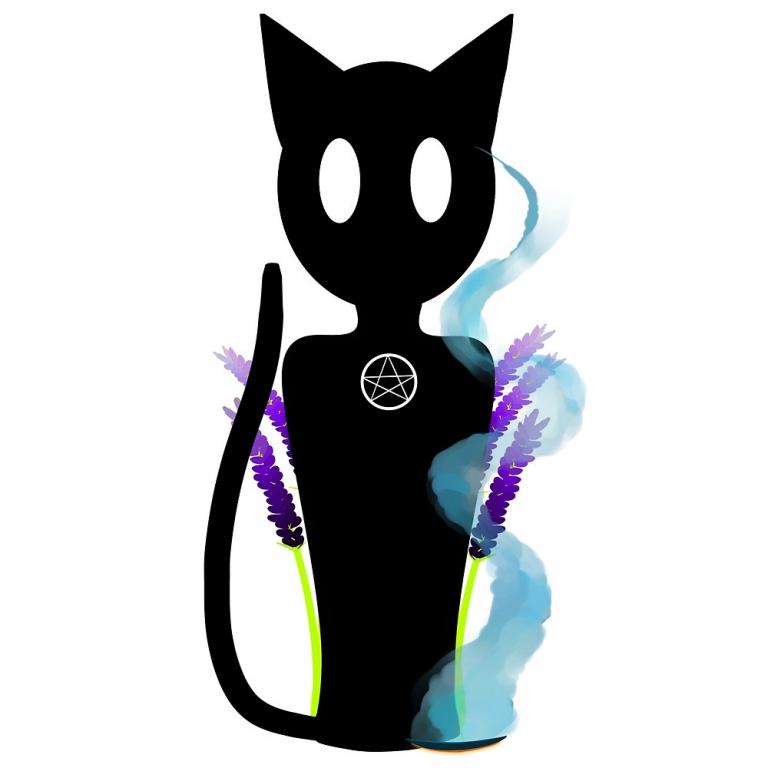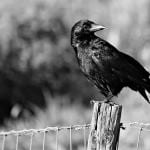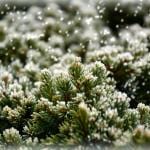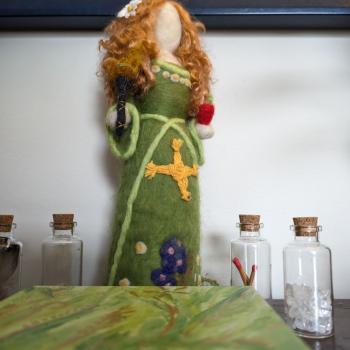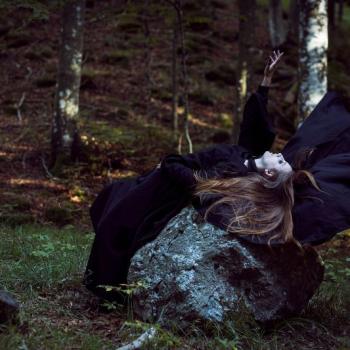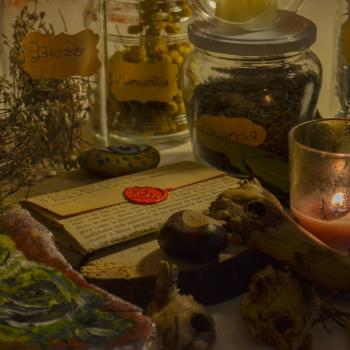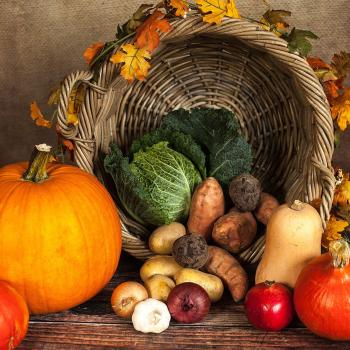Listeners of 3 Pagans and a Cat know my child, Ode, is a Syncretic Heathen, following the Norse pantheon. Everyone in my family follows a different tradition/path, which we combine and share during our Wheel of the Year rituals/observances. Which is why Modraniht (Mother’s Night), as part of our Yule celebration, has become as important to me as it is to Ode. So, I thought I’d take a closer look at this feast day and how our family celebrates Modraniht.
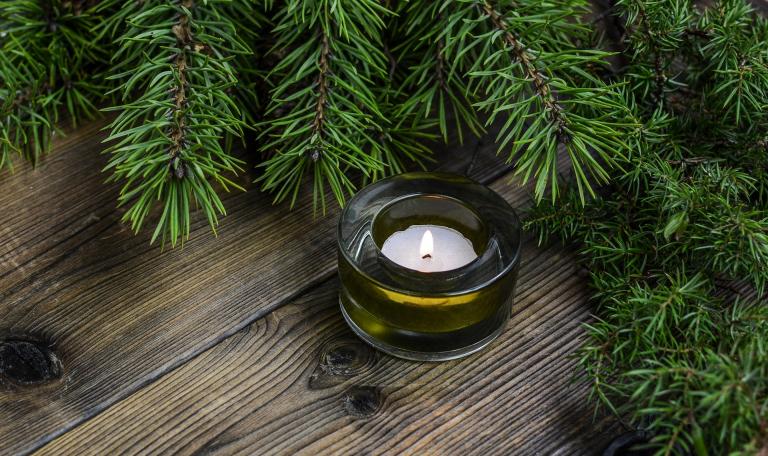
Modraniht, Mutternacht or the Night of Mothers
My heritage is German, Norwegian, Danish and English. However, I’d never thought much about my Norwegian or Danish ancestry until Ode became a Syncretic Heathen. Through following Ode’s journey, I’ve learned about the gods of my Norse and Germanic ancestors.
As a Solitary Witch, I did not include ancestor veneration in my practice. My witchery did not have a purposeful, worship component at the time either. However, Ode talked to me about their ancestor altar and how they interacted with our family line. Mother’s Night allowed me to experience it first hand, showing me how meaningful such honoring can be.
However, I also believe sharing in traditions such as Modraniht helped me overcome religious barriers self-imposed after leaving Christianity. First, through creating emotional space to venerate my ancestors, leading to the creation of an altar for my father after he crossed the veil. And then to transition from secular witchery into a spiritual practice which now includes devotion to Frigga, Brighid and Hekate.
So, what is Modraniht or Mother’s Night?
Modraniht, Mutternacht (Mother’s Night or Night of the Mother’s) was part of Germanic/Norse Winter solstice tradition. During this feast day, the ancestral founding women, grandmothers, mothers and caretaking women of the clan were honored, along with Frigg and local/geographical female deities.
Known as Disir (ancestral mothers), these spirits were protectors of the land, guardians of the home and family, and guiding the prosperity/fertility of the clan(s). They aided women in childbirth and protected men in battle.
Held on December 2oth, Modraniht is designed to honor goddess and mother ancestors. It is the kickoff of twelve days of Yule observance and celebration in Heathen tradition. Interestingly, in the Celtic Druidry path which Car follows, the celebration begins twelve days before Winter Solstice. So for our family, Yule is the mid-point of the holiday season.
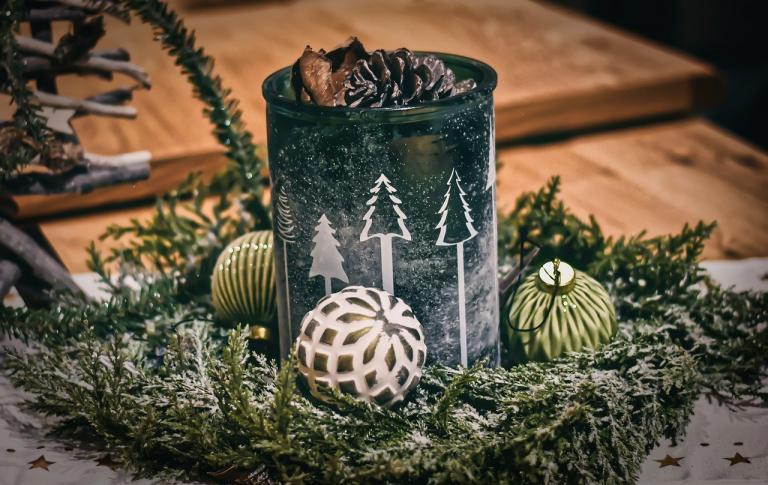
Our Mother’s Night
For our Modraniht, we begin with the lighting of our Yule log at sunset (as we have been doing for eleven days prior in accordance with Car’s tradition). We light the candles on our ancestor altar.
Ode leads us in ritual with songs and prayers honoring Frigga, other female deities, the Disir, and calling upon the women of our ancestral line to join us in our sacred space (a circle which I cast as part of my tradition as a Witch).
We share stories of grandmothers, great-grandmothers, and the women of our family who are now part of the Beloved Dead. Then we share a meal, something simple such as home-made bread and potato-cheese soup.
The rite is both solemn and joyous. And I look forward to participating in Modraniht every year. Because while I may not be Heathen in my practice, this particular ritual calls to a deep place within my spirit to honor my ancestral Goddess and mothers.
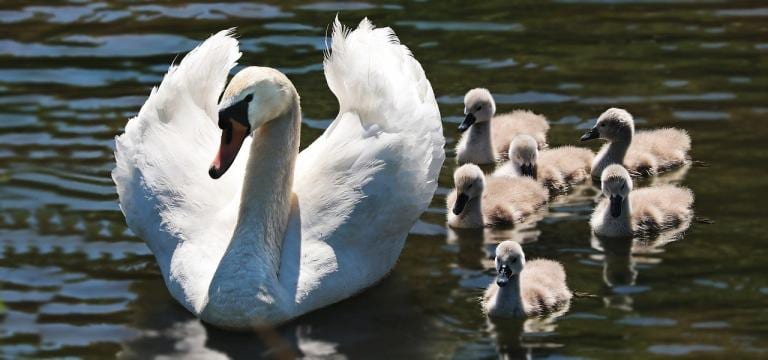
The Night of Mothers Is For Everyone
While speaking with Ode about this article, they informed me that Heathenry is an open tradition. Meaning that people of all ancestries are welcome (don’t believe those who spout “folkish” exclusivity).
The Norse deities are accessible to any path, as are celebrations such as Mother’s Night. This celebration is open to interpretation regardless of gender and inclusive in scope (Loki is both a mother and father, afterall). If you have a mother, or are a mother (traditional, spiritual or otherwise), then Modraniht is for you.
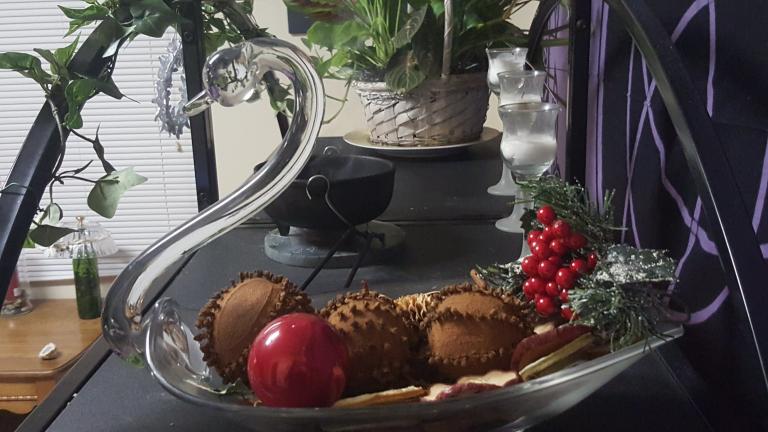
Many Paths, One Ritual
I’m aware my family is unusual. We have distinct, individual Pagan paths. However, I’ve found that in working together to share a piece of what’s important in our varied forms of worship or ritual, we have learned a lot about each other’s traditions and been able to enrich our personal paths through the experience.
Which is why we encourage people of other paths to come together, create a ritual which blends different methods or ways to honor deity, ancestors, or sacred days. Car, Ode and I have led a public ritual fused with Heathen, Druid and Hekataen-Green witchery to great success. We plan to teach a class on how to do so in the future as well.
So, I encourage you to learn more about Modraniht (Mother’s Night), even if you are not of a Heathen tradition or similar ancestry as my own. Maybe create your own ritual to honor personal ancestral mothers on Yule Eve (or hey, for those with Catholic family members, it could be a way to bridge the spiritual gap by honoring Mary as well). However one chooses to observe Mother’s Night, it is a beautiful way to remember the minders of home, family and spiritual community.

